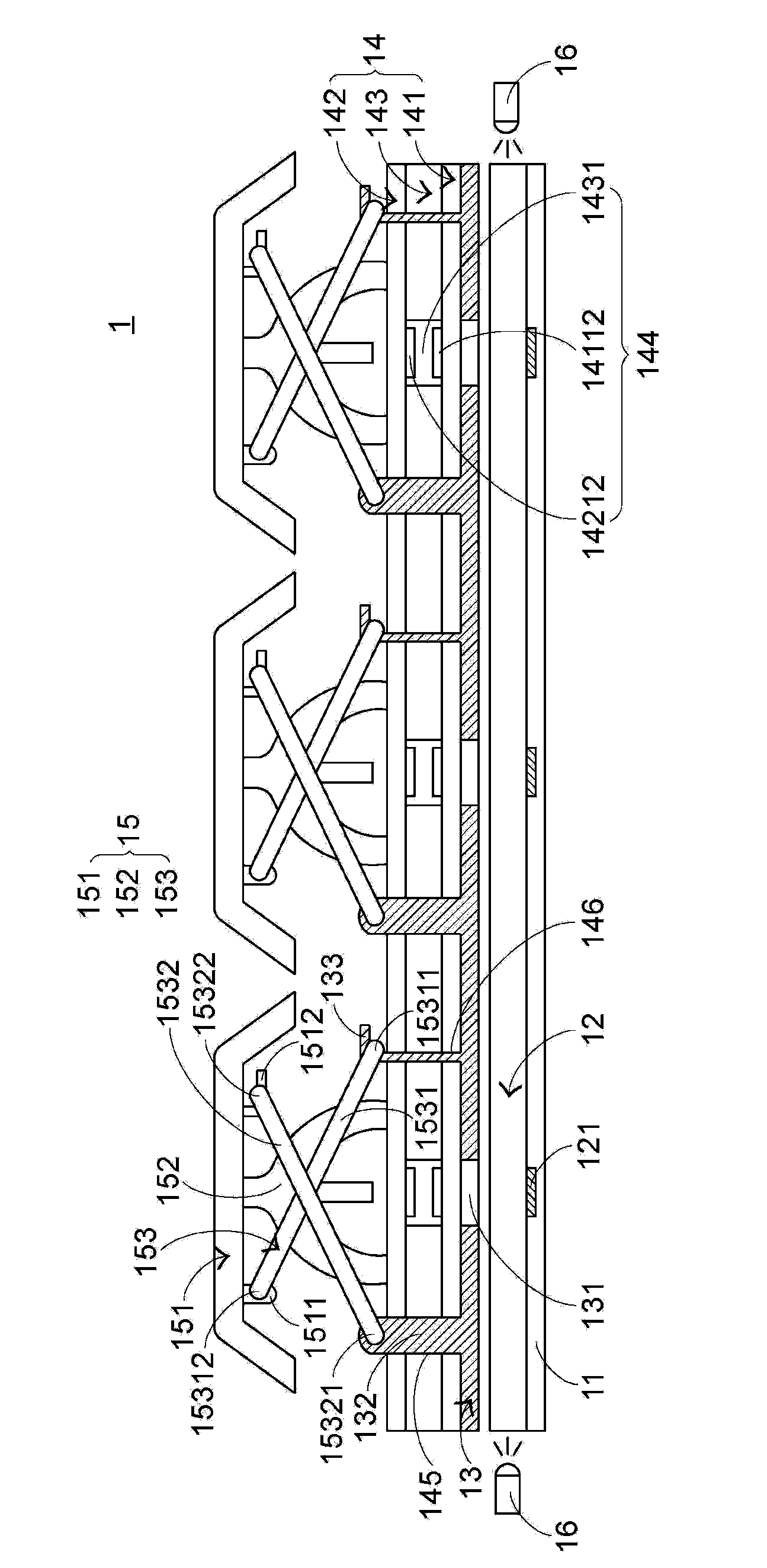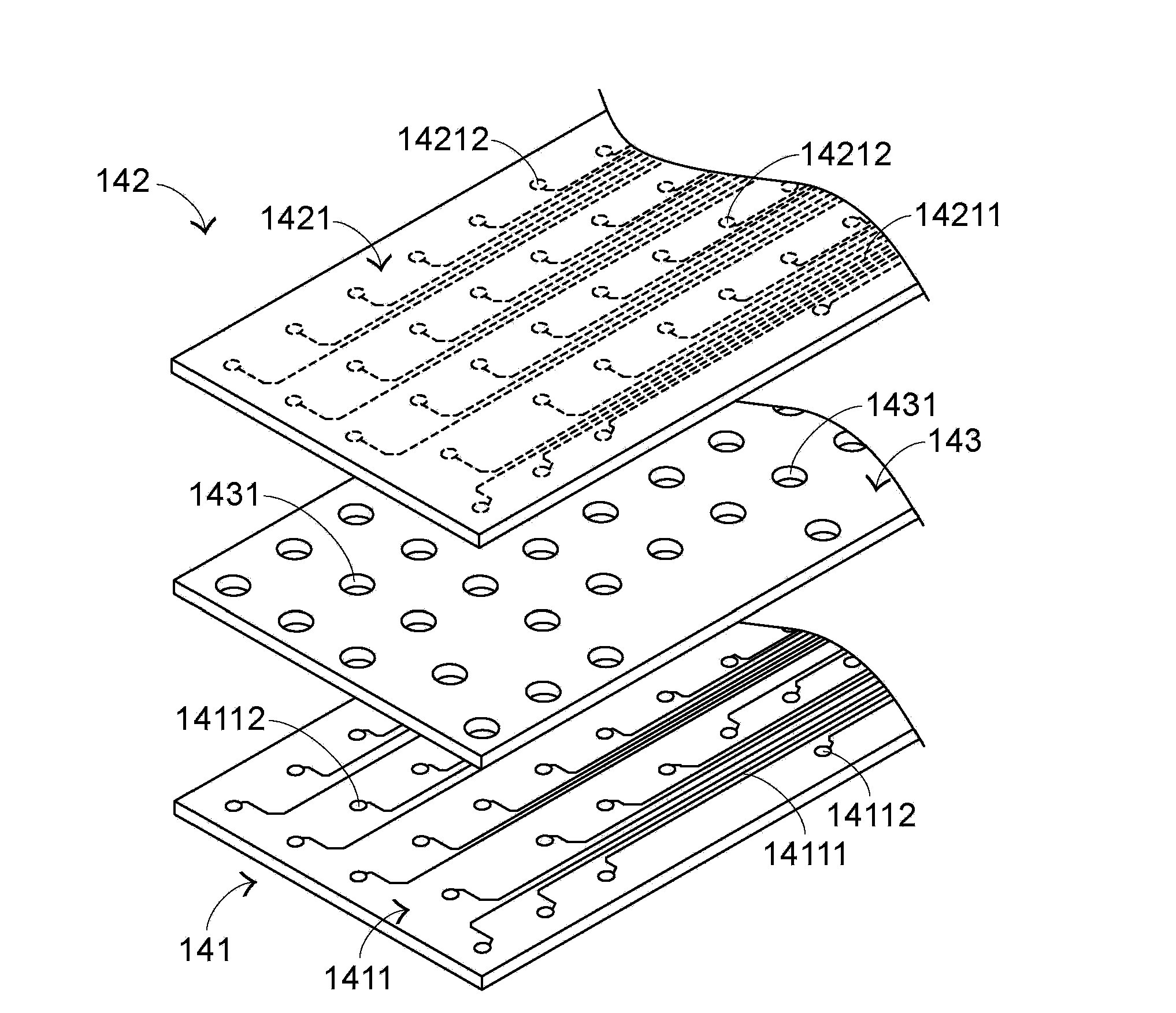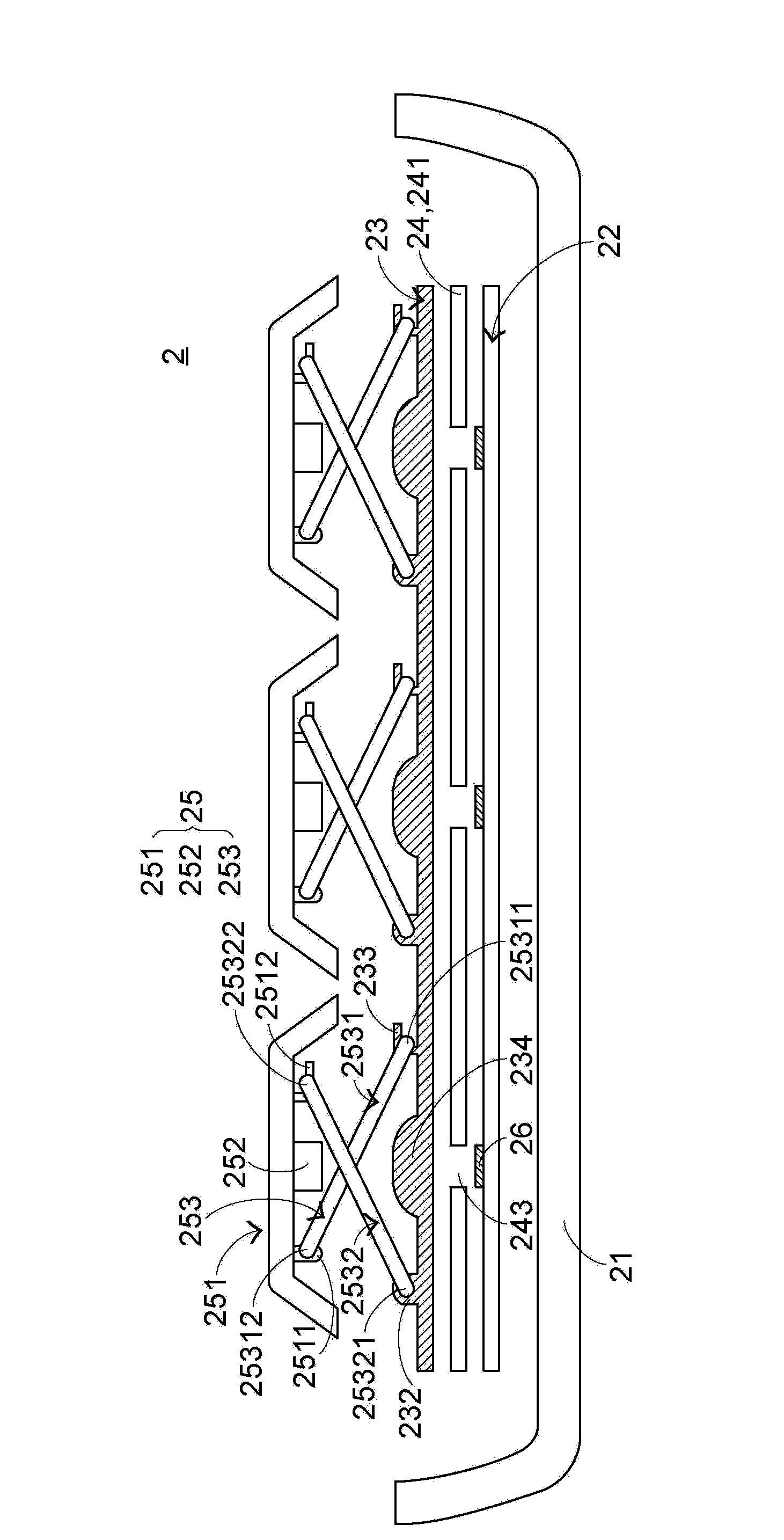Light-emitting keyboard
A technology of light-emitting keyboards and light-emitting components, which is applied in the direction of electrical components, electric switches, circuits, etc., can solve the problems of electrical conduction, the inability to implement light-emitting keyboards, and the inability to meet appearance demands, and achieve the effect of improving use efficiency
- Summary
- Abstract
- Description
- Claims
- Application Information
AI Technical Summary
Problems solved by technology
Method used
Image
Examples
Embodiment Construction
[0117] see image 3 and Figure 4 , image 3 It is a side view of the structure of the luminous keyboard in the first preferred embodiment of the present invention, Figure 4 for image 3 The structure diagram of the sensing circuit layer and the driving circuit board of the light-emitting keyboard shown. The luminous keyboard 2 includes a base 21, a light-emitting element driving circuit board 22, a sensing circuit layer 24, a light-transmitting support plate 23, and a plurality of keys 25 in sequence from bottom to top, and the luminous keyboard 2 also includes buttons corresponding to the plurality of keys 25. A plurality of direct-type light-emitting elements 26; wherein, the base 21 is used to carry a light-emitting element driving circuit board 22, a sensing circuit layer 24, a light-transmitting support plate 23, a plurality of buttons 25, and a plurality of direct-type light-emitting elements 26, and the light-emitting element drives A light-emitting element drivin...
PUM
 Login to View More
Login to View More Abstract
Description
Claims
Application Information
 Login to View More
Login to View More - Generate Ideas
- Intellectual Property
- Life Sciences
- Materials
- Tech Scout
- Unparalleled Data Quality
- Higher Quality Content
- 60% Fewer Hallucinations
Browse by: Latest US Patents, China's latest patents, Technical Efficacy Thesaurus, Application Domain, Technology Topic, Popular Technical Reports.
© 2025 PatSnap. All rights reserved.Legal|Privacy policy|Modern Slavery Act Transparency Statement|Sitemap|About US| Contact US: help@patsnap.com



